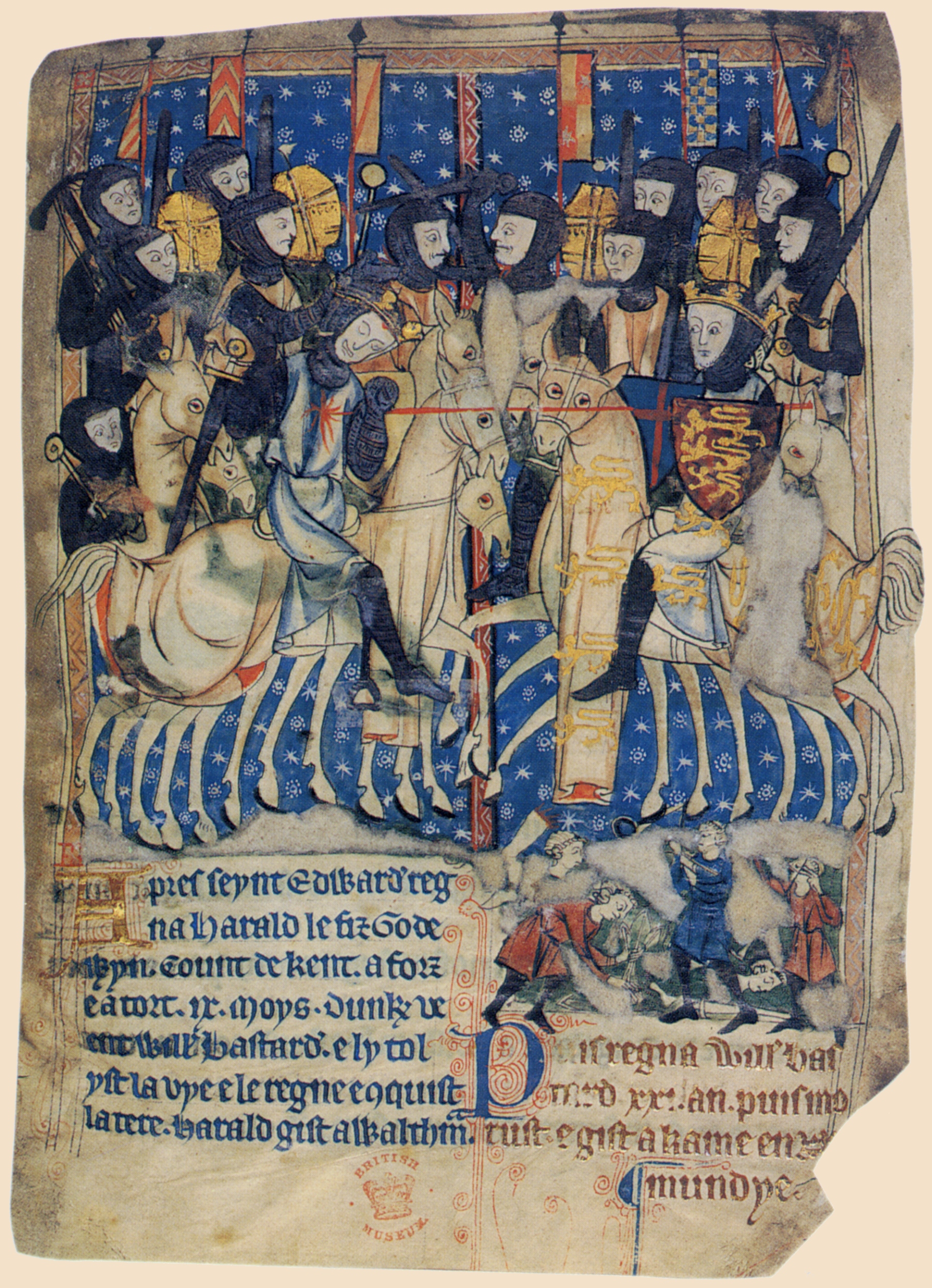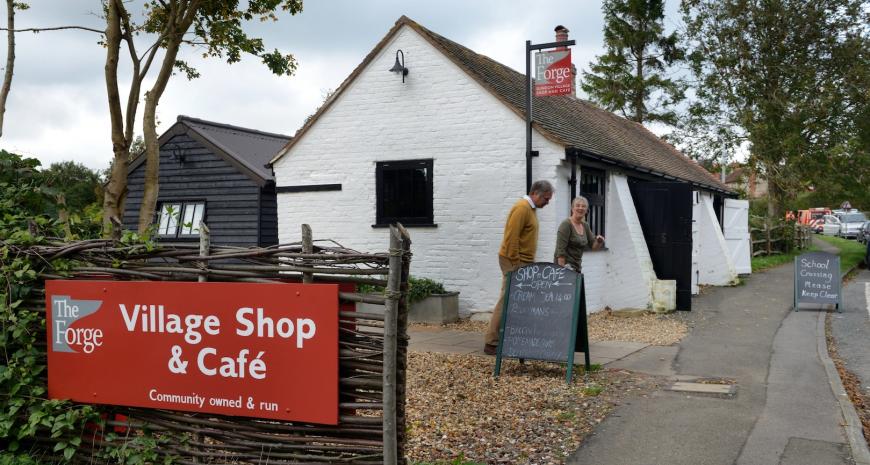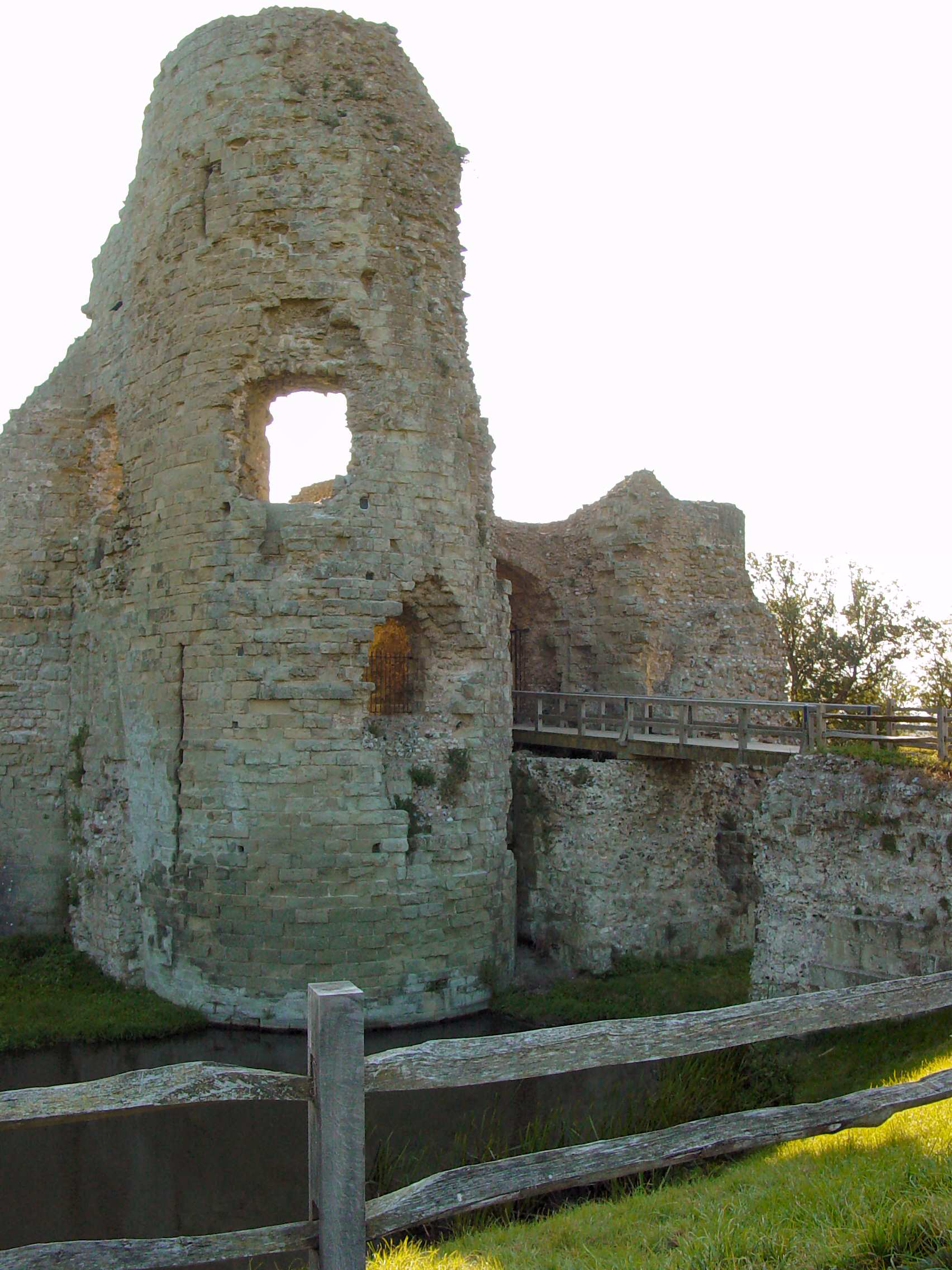|
Hawkhurst Gang
The Hawkhurst Gang was a notorious criminal organisation involved in smuggling throughout southeast England from 1735 until 1749. One of the more infamous gangs of the early 18th century, they extended their influence from Hawkhurst, their base in Kent, along the South coast, to Dorset, where they successfully raided the customs house at Poole. After they were defeated in a battle with the Goudhurst militia in 1747, two of their leaders, Arthur Gray and Thomas Kingsmill, were executed in 1748 and 1749. Early years Named after the village of Hawkhurst, the gang was first mentioned as the ''Holkhourst Genge'' in 1735. The gang was based in the "Oak and Ivy Inn", Hawkhurst. A secondary headquarters was The Mermaid Inn in the town of Rye, where they would sit with their loaded weapons on the table.Croot. Salacious Sussex.pp. 16–17 Many local legends and folklore are based on the alleged network of tunnels built by the gang. However, many hidden cellars and remote barns could ha ... [...More Info...] [...Related Items...] OR: [Wikipedia] [Google] [Baidu] |
Hawkhurst
Hawkhurst is village and civil parish in the borough of Tunbridge Wells in Kent, England. The village is located close to the border with East Sussex, around south-east of Royal Tunbridge Wells and within the High Weald Area of Outstanding Natural Beauty. Hawkhurst is virtually two villages: The Moor, to the south, consists mainly of cottages clustered around a large triangular green, while Highgate, to the north, features a colonnade of independent shops, two country pubs, hotels, a digital cinema in a converted lecture hall, and Waitrose and Tesco supermarkets. There are four designated conservation areas in Hawkhurst parish – one at Sawyers Green, two in Highgate (Highgate and All Saints' Church) and one at The Moor. There are also over 200 listed buildings across the parish. Since boundary changes in the 2010 general election, Hawkhurst is part of the parliamentary constituency of Tunbridge Wells, represented by Conservative Greg Clark. Prior to this it was in the Maid ... [...More Info...] [...Related Items...] OR: [Wikipedia] [Google] [Baidu] |
Hastings
Hastings () is a large seaside town and borough in East Sussex on the south coast of England, east to the county town of Lewes and south east of London. The town gives its name to the Battle of Hastings, which took place to the north-west at Senlac Hill in 1066. It later became one of the medieval Cinque Ports. In the 19th century, it was a popular seaside resort, as the railway allowed tourists and visitors to reach the town. Today, Hastings is a fishing port with the UK's largest beach-based fishing fleet. It has an estimated population of 92,855 as of 2018. History Early history The first mention of Hastings is found in the late 8th century in the form ''Hastingas''. This is derived from the Old English tribal name '' Hæstingas'', meaning 'the constituency (followers) of Hæsta'. Symeon of Durham records the victory of Offa in 771 over the ''Hestingorum gens'', that is, "the people of the Hastings tribe." Hastingleigh in Kent was named after that tribe. The place n ... [...More Info...] [...Related Items...] OR: [Wikipedia] [Google] [Baidu] |
Sir Cecil Bishopp, 6th Baronet
Sir Cecil Bisshopp, 6th Baronet Bisshopp (30 October 1700 – 15 June 1778), was a British politician. He succeeded to the title of 6th Baronet Bishopp, of Parham, co. Sussex on 25 October 1725. He was Member of Parliament for Penryn between 1727 and 1734, having been returned unopposed on the interest of the Boscawen family into which he had married.The History of Parliament: the House of Commons 1715-1754, ed. R. Sedgwick, 1970 He also represented Boroughbridge between 1755 and 1768. He married Hon. Anne Boscawen, daughter of Hugh Boscawen, 1st Viscount Falmouth and Charlotte Godfrey, in 1726. In addition to Parham Park, Sussex he was also the owner of a house at 11 Berkeley Square, London which Horace Walpole purchased from Bisshopp's heirs in 1779 and in which Walpole lived until he died there in 1797. Sir Cecil died on 15 June 1778 at the age of 77. Issue Sir Cecil was noted for having a large number of children, at least thirteen, for the period, so many that it "c ... [...More Info...] [...Related Items...] OR: [Wikipedia] [Google] [Baidu] |
Parham Park
Parham Park is an Elizabethan house and estate in the civil parish of Parham, west of the village of Cootham, and between Storrington and Pulborough, West Sussex, South East England. The estate was originally owned by the Monastery of Westminster and granted to Robert Palmer by King Henry VIII in 1540. History The foundation stone was laid in 1577 by the 2-year-old Thomas Palmer, and Parham has been a family home ever since. Thomas Bishopp (later Sir Thomas Bishopp, 1st Baronet) bought Parham House in 1601. For over 300 years his descendants continued to live at Parham House Estate until January 1922. Then in 1922 the Hon. Clive Pearson, younger son of Viscount Cowdray, bought Parham from Mary, 17th Baroness Zouche in her own right, and he and his wife Alicia opened the house to visitors in 1948, after the Second World War when it had also been home to evacuee children and Canadian soldiers. Off the Long Gallery at the top of the house there is an exhibition which touches on ... [...More Info...] [...Related Items...] OR: [Wikipedia] [Google] [Baidu] |
Slindon
Slindon is a mostly rural village and civil parish in the Arun District of West Sussex, England, containing a developed nucleus amid woodland. Much of Slindon's woodland belongs to the National Trust on the southern edge of the escarpment of the South Downs National Park. Slindon is centred north-east of Chichester. History The village is listed in the Domesday Book of 1086 as "Eslindone", the name having the probable meaning in Old English of "sloping hill". The Domesday Book records Slindon as having 35 households, putting it in the top 20% of settlements. St Mary's 12th-century parish church contains a memorial to Stephen Langton (c1150–1228), the Archbishop of Canterbury who attended the signing of Magna Carta. In the Middle Ages Slindon House (now Slindon College) was the site of one of the Archbishop's residences. In 1330 Thomas de Natindon, who was a legal representative of the Pope, was sent there to serve a writ on the archbishop. His party were not well rece ... [...More Info...] [...Related Items...] OR: [Wikipedia] [Google] [Baidu] |
Walberton
Walberton is a village and civil parish in the Arun District of West Sussex, England, north-west of Littlehampton, and south of the A27 road. The land rises from above sea level, a quarter of the height of Nore Hill, the nearest foothill of the South Downs, which is to the north of the parish. The parish includes the smaller village of Binsted to the east and the larger neighbourhood of Fontwell, less than two-thirds of a mile (1 km) to the north-west. Walberton has a medieval church next to its clustered centre. Binsted's medieval church retains an original setting of village houses dispersed over farm fields. History The two churchyards have yielded archaeological evidence that there was settlement during the Bronze Age, about 3,500 years ago. Some fragments of brick and tile were discovered at Binsted during excavations in 1992. Walberton is listed in the Domesday Book of 1086 under the Hundred of Binsted (also called Avisford; called Binsted in 1086 but had its late ... [...More Info...] [...Related Items...] OR: [Wikipedia] [Google] [Baidu] |
Pevensey
Pevensey ( ) is a village and civil parish in the Wealden district of East Sussex, England. The main village is located north-east of Eastbourne, one mile (1.6 km) inland from Pevensey Bay. The settlement of Pevensey Bay forms part of the parish. It was here that William the Conqueror made the landing in his invasion of England in 1066 after crossing the English Channel from Normandy. Geography Pevensey is situated on a spur of sand and clay, about above sea level. In Roman times this spur was a peninsula that projected into a tidal lagoon and marshes. A small river, Pevensey Haven, runs along the north side of the peninsula and would originally have discharged into the lagoon, but is now largely silted up. The lagoon extended inland as far north as Hailsham and eastwards to Hooe. With the effect of longshore drift this large bay was gradually cut off from the sea by shingle, so that today's marshes are all that remain behind the shingle beach. The marshes, known ... [...More Info...] [...Related Items...] OR: [Wikipedia] [Google] [Baidu] |
Cutter (boat)
A cutter is a type of watercraft. The term has several meanings. It can apply to the rig (or sailplan) of a sailing vessel (but with regional differences in definition), to a governmental enforcement agency vessel (such as a coast guard or border force cutter), to a type of ship's boat which can be used under sail or oars, or, historically, to a type of fast-sailing vessel introduced in the 18th century, some of which were used as small warships. As a sailing rig, a cutter is a single-masted boat, with two or more headsails. On the eastern side of the Atlantic, the two headsails on a single mast is the fullest extent of the modern definition. In U.S. waters, a greater level of complexity applies, with the placement of the mast and the rigging details of the bowsprit taken into account so a boat with two headsails may be classed as a sloop. Government agencies use the term "cutter" for vessels employed in patrolling their territorial waters and other enforcement activities. Th ... [...More Info...] [...Related Items...] OR: [Wikipedia] [Google] [Baidu] |
Contraband
Contraband (from Medieval French ''contrebande'' "smuggling") refers to any item that, relating to its nature, is illegal to be possessed or sold. It is used for goods that by their nature are considered too dangerous or offensive in the eyes of the legislator—termed contraband ''in se''—and forbidden. So-called derivative contraband refers to goods that may normally be owned, but are liable to be seized because they were used in committing an unlawful act and hence begot illegally, e.g. smuggling goods; stolen goods – knowingly participating in their trade is an offense in itself, called fencing. Law of armed conflict In international law, contraband means goods that are ultimately destined for territory under the control of the enemy and may be susceptible for use in armed conflict. Traditionally, contraband is classified into two categories, absolute contraband and conditional contraband. The former category includes arms, munitions, and various materials, such a ... [...More Info...] [...Related Items...] OR: [Wikipedia] [Google] [Baidu] |
Gibbet
A gibbet is any instrument of public execution (including guillotine, decapitation, executioner's block, Impalement, impalement stake, gallows, hanging gallows, or related Scaffold (execution site), scaffold). Gibbeting is the use of a gallows-type structure from which the dead or dying bodies of criminals were hanged on public display to deter other existing or potential criminals. Occasionally, the gibbet was also used as a method of execution, with the criminal being left to die of exposure, thirst and/or starvation. The practice of placing a criminal on display within a gibbet is also called "hanging in chains". Display Gibbeting was a common law punishment, which a judge could impose in addition to execution. This practice was regularized in England by the Murder Act 1751, which empowered judges to impose this for murder. It was most often used for traitors, murderers, highwayman, highwaymen, pirates, and sheep stealers and was intended to discourage others from commi ... [...More Info...] [...Related Items...] OR: [Wikipedia] [Google] [Baidu] |
Robertsbridge
Robertsbridge is a village in the civil parish of Salehurst and Robertsbridge, and the Rother district of East Sussex, England. It is approximately 10 miles (16 km) north of Hastings and 13 miles (21 km) south-east of Royal Tunbridge Wells. The River Rother passes through the village. History The village is thought to date back to 1176 when a Cistercian abbey was founded there by the Abbot, Robert de St Martin. When a market charter was granted in 1198 by Richard I to Robertsbridge (''Pons Roberti'' in Latin) it was the first recorded use of the name. The abbey was dissolved in 1538; however, the town flourished, and many of the oldest existing houses in the village date from the 14th and 15th centuries, including The Seven Stars Inn in the High Street. From the village was discovered the Robertsbridge Codex (1360), a music manuscript from the 14th century. It contains the earliest surviving music written specifically for keyboard. Transport Robertsbridge Railw ... [...More Info...] [...Related Items...] OR: [Wikipedia] [Google] [Baidu] |






